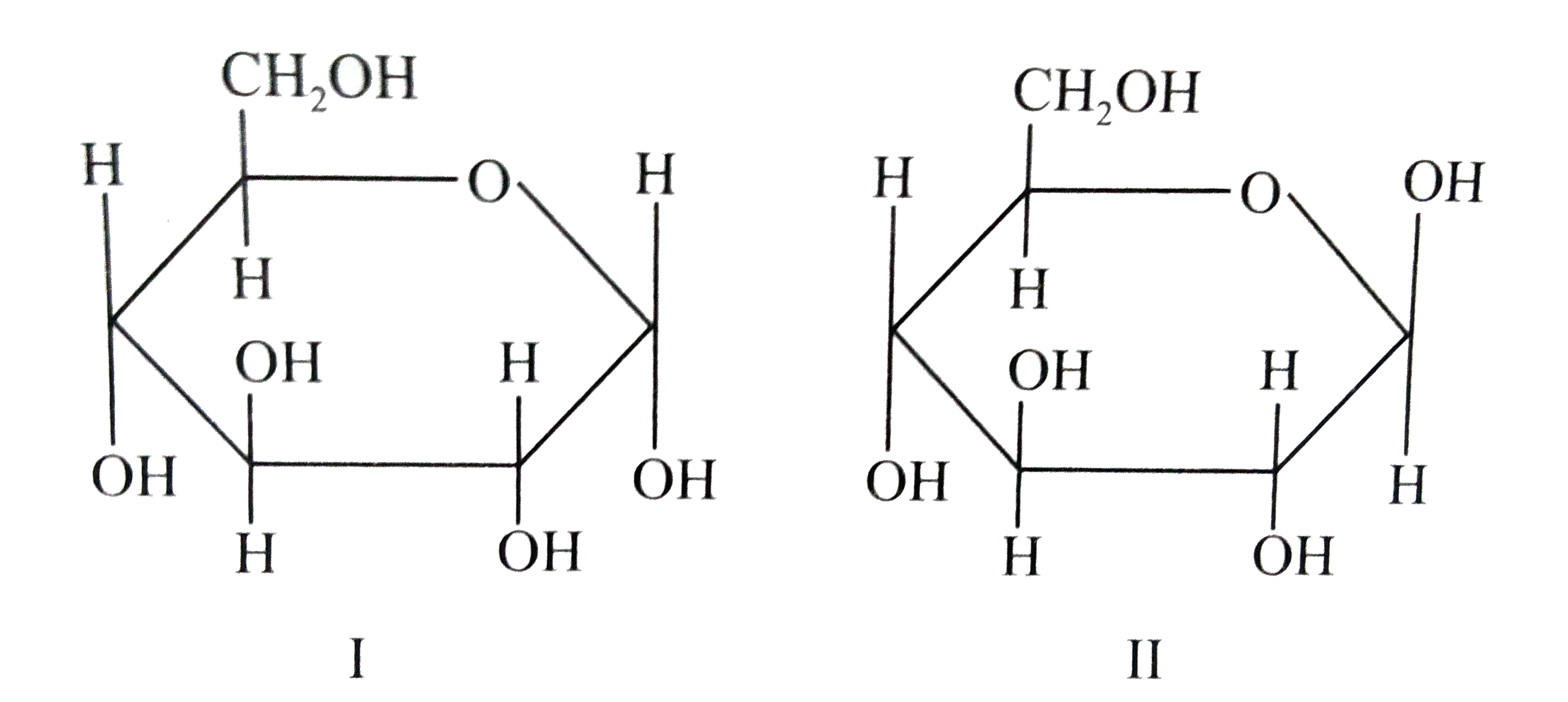Convert D-glucopyranose to 2,3,4− triethyl gluocopynoside.
To convert D-glucopyranose to 2,3,4-triethylglucopyranoside, we will follow a series of chemical reactions. Here’s a step-by-step breakdown of the process:
Step 1: Structure of D-glucopyranose
- D-glucopyranose is a six-membered cyclic form of glucose. It contains five hydroxyl (–OH) groups and one aldehyde group. The structure can be represented as follows:
OHOCH2OH||HOH||HOH
- Note: The configuration of the hydroxyl groups can vary (alpha or beta), but we will represent it generically.
Step 2: Methylation of Hydroxyl Groups
- To begin the transformation, we will convert the hydroxyl groups at positions 2, 3, and 4 into ethyl groups. First, we will convert the hydroxyl groups to methoxy groups (–OCH3) using methanol (MeOH) and HCl. This can be done by treating D-glucopyranose with MeOH and HCl to form methyl glucopyranoside.
D−glucopyranose+MeOHHCl→Methylglucopyranos
Step 3: Ethylation of Methyl Glucopyranoside
- Next, we will convert the methyl glucopyranoside to ethyl glucopyranoside. This can be achieved by treating the compound with ethanol (EtOH) and HCl. The reaction will replace the methoxy group with an ethoxy group.
Methylglucopyranos+EtOHHCl→Ethylglucopyranos
Step 4: Protection of Hydroxyl Groups
- To protect the hydroxyl group on the CH2OH position (the primary alcohol), we will treat the ethyl glucopyranoside with trityl chloride (Ph3CCl). This bulky reagent will selectively protect the primary alcohol while leaving the secondary alcohols free.
Ethylglucopyranos+Ph3Cl→Protectedethylglucopyranos
Step 5: Ethylation of Remaining Hydroxyl Groups
- Now that the primary hydroxyl group is protected, we can ethylate the remaining hydroxyl groups at positions 2 and 3. This can be done using diethyl sulfate (Et2SO4) in the presence of a base like sodium hydroxide (NaOH).
Protectedethylglucopyranos+Et2SO4NaOH→2,3,4−triethylglucopyranosprotected
Step 6: Deprotection of the Hydroxyl Group
- Finally, we will remove the trityl protecting group by performing acidic hydrolysis. This will regenerate the hydroxyl group on the CH2OH position while keeping the ethyl groups at positions 2, 3, and 4 intact.
Protected2,3,4−triethylglucopyranos+Ac2,3,4−triethylglucopyranos
Final Structure
- The final product is 2,3,4-triethylglucopyranoside, which has ethyl groups at positions 2, 3, and 4, and retains the hydroxyl group at position 1 and the CH2OH group.
Summary of Reactions
1. D-glucopyranose + MeOH/HCl → Methyl glucopyranoside
2. Methyl glucopyranoside + EtOH/HCl → Ethyl glucopyranoside
3. Ethyl glucopyranoside + Ph3CCl → Protected ethyl glucopyranoside
4. Protected ethyl glucopyranoside + Et2SO4/NaOH → 2,3,4-triethyl glucopyranoside (protected)
5. Protected 2,3,4-triethyl glucopyranoside + Acid → 2,3,4-triethylglucopyranoside
- D-glucopyranose is a six-membered cyclic form of glucose. It contains five hydroxyl (–OH) groups and one aldehyde group. The structure can be represented as follows:
- To begin the transformation, we will convert the hydroxyl groups at positions 2, 3, and 4 into ethyl groups. First, we will convert the hydroxyl groups to methoxy groups (–OCH3) using methanol (MeOH) and HCl. This can be done by treating D-glucopyranose with MeOH and HCl to form methyl glucopyranoside.
- Next, we will convert the methyl glucopyranoside to ethyl glucopyranoside. This can be achieved by treating the compound with ethanol (EtOH) and HCl. The reaction will replace the methoxy group with an ethoxy group.
- To protect the hydroxyl group on the CH2OH position (the primary alcohol), we will treat the ethyl glucopyranoside with trityl chloride (Ph3CCl). This bulky reagent will selectively protect the primary alcohol while leaving the secondary alcohols free.
- Now that the primary hydroxyl group is protected, we can ethylate the remaining hydroxyl groups at positions 2 and 3. This can be done using diethyl sulfate (Et2SO4) in the presence of a base like sodium hydroxide (NaOH).
- Finally, we will remove the trityl protecting group by performing acidic hydrolysis. This will regenerate the hydroxyl group on the CH2OH position while keeping the ethyl groups at positions 2, 3, and 4 intact.
- The final product is 2,3,4-triethylglucopyranoside, which has ethyl groups at positions 2, 3, and 4, and retains the hydroxyl group at position 1 and the CH2OH group.
1. D-glucopyranose + MeOH/HCl → Methyl glucopyranoside
2. Methyl glucopyranoside + EtOH/HCl → Ethyl glucopyranoside
3. Ethyl glucopyranoside + Ph3CCl → Protected ethyl glucopyranoside
4. Protected ethyl glucopyranoside + Et2SO4/NaOH → 2,3,4-triethyl glucopyranoside (protected)
5. Protected 2,3,4-triethyl glucopyranoside + Acid → 2,3,4-triethylglucopyranoside
Topper's Solved these Questions
- BIOMOLECULESBOOK - CENGAGE CHEMISTRY ENGLISHCHAPTER - BIOMOLECULESEXERCISE - Exercises (Concept Application)
25 Videos
- BIOMOLECULESBOOK - CENGAGE CHEMISTRY ENGLISHCHAPTER - BIOMOLECULESEXERCISE - Exercises (Linked Comprehension)
36 Videos
- BIOMOLECULESBOOK - CENGAGE CHEMISTRY ENGLISHCHAPTER - BIOMOLECULESEXERCISE - Exercises Archives (Analytical And Descriptive)
8 Videos
- AROMATIC COMPOUNDS AND ALKYL AND ARYL HALIDES BOOK - CENGAGE CHEMISTRY ENGLISHCHAPTER - AROMATIC COMPOUNDS AND ALKYL AND ARYL HALIDES EXERCISE - Archives Subjective Type
4 Videos
- CARBOXYLIC ACIDS AND THEIR DERIVATIVESBOOK - CENGAGE CHEMISTRY ENGLISHCHAPTER - CARBOXYLIC ACIDS AND THEIR DERIVATIVESEXERCISE - Exercises Archives (Analytical And Descriptive)
34 Videos
Similar Questions
α-D-Glucopyranose and β-D-Glucopyranose are
View Solutionα−D(+) glucopyranose is.
View SolutionConvert chlorobenzene to 4- nitrophenol
View SolutionStudy the structures of α−D-(+) glucopyranose and β−D(+) glucopyranose and mark the correct statement.

View SolutionFind out of compounds which show mutarotation
(A) Cellobiose
(4−O−(β−D−glucopyranosyl)−D−glucophranose)
(B) Maltose
(4−O−(α−D−glucopyranosyl)−D−glucopyranose)
(C) Lactose
(4−O−(β−D−galactopyranosyl)−D−glucopyranose)
(D) Gentiobiose
(6−O−(β−D−glucopyranosyl)−D−glucopyranose)
(E) Sucrose
(α−D−glucopyranosyl−β−D−fructofuranoside)
(F) Methyl α−D−galactopyranoside.
(G) α−D− allopyranose
(G) α−D− glucopyranose
(I) α−D− fructofuranose
View SolutionThe two forms of D-glucopyranose obtained from solution of D-glucose are known as:
View SolutionThe two forms of D-glucopyranose obtained from solution of D-glucose are known as:
View SolutionConvert D-erythrose to next higher aldose.
View SolutionThe two structures of D-glucopyranose forms are
View SolutionHow will you convert propene to 2, 3-dimethylbutane?
View Solution
